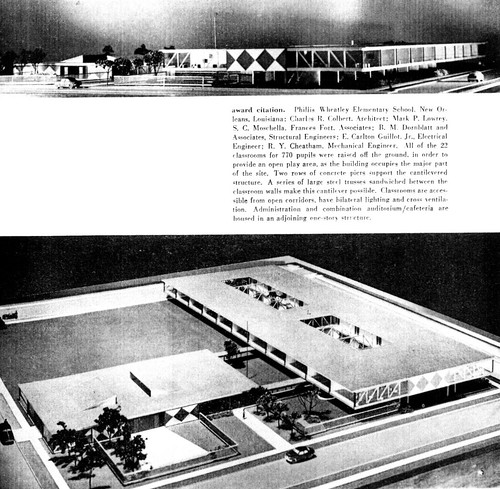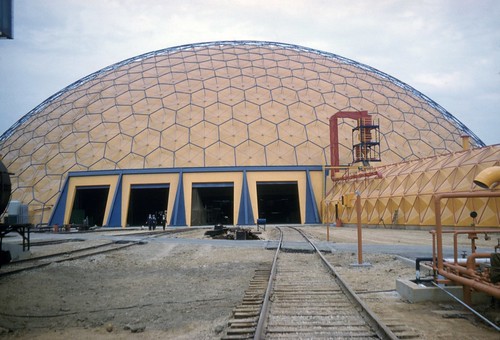In 1955 the Phillis Wheatley Elementary School was awarded a citation for its innovative design by Progressive Architecture.
All of the 22 classrooms for 770 pupils were raised off the ground, in order to provide an open play area, as the building occupies the major part of the site. Two rows of concrete piers support the cantilivered structure. A series of large steel trusses sandwiched between the classroom walls make this cantilever possible. Classrooms are accessible from open corridors, have bilateral lighting and cross ventilation. Administration and combination auditorium / cafeteria are housed in adjoining one-story structure.
In addition to Phillis Wheatley, five other designs by New Orleans architects received awards in Progressive Architecture's second annual Design Awards Program juried by Dr. Walter Gropius.
The Times-Picayune reports, "The designs, which gave New Orleans and Louisiana more awards than any other city or state were done by Curtis and Davis, Charles R. Colbert, John W. Lawrence, George A. Saunders, Buford L. Pickens and John Ekin Dinwiddie. The designs were of six proposed Louisiana buildings."
The envelope please.....
HEALTHCARE Madison Parish Hospital in Tullulah, Curtis and Davis
EDUCATION Phillis Wheatley Elementary School in New Orleans, Charles R. Colbert
RESIDENTIAL Dr. and Mrs. Lyman K. Richardson Residence in Harahan, Curtis and Davis
RESIDENTIAL Vacation House in Lacombe, Lawrence and Saunders
RESIDENTIAL General Electric demonstration house in New Orleans, John Lawrence and George A. Saunders with Buford L. Pickens
RELIGIOUS St. Bernard Methodist Church in Chalmette, John Lawrence and George A. Saunders with John Dinwiddie



